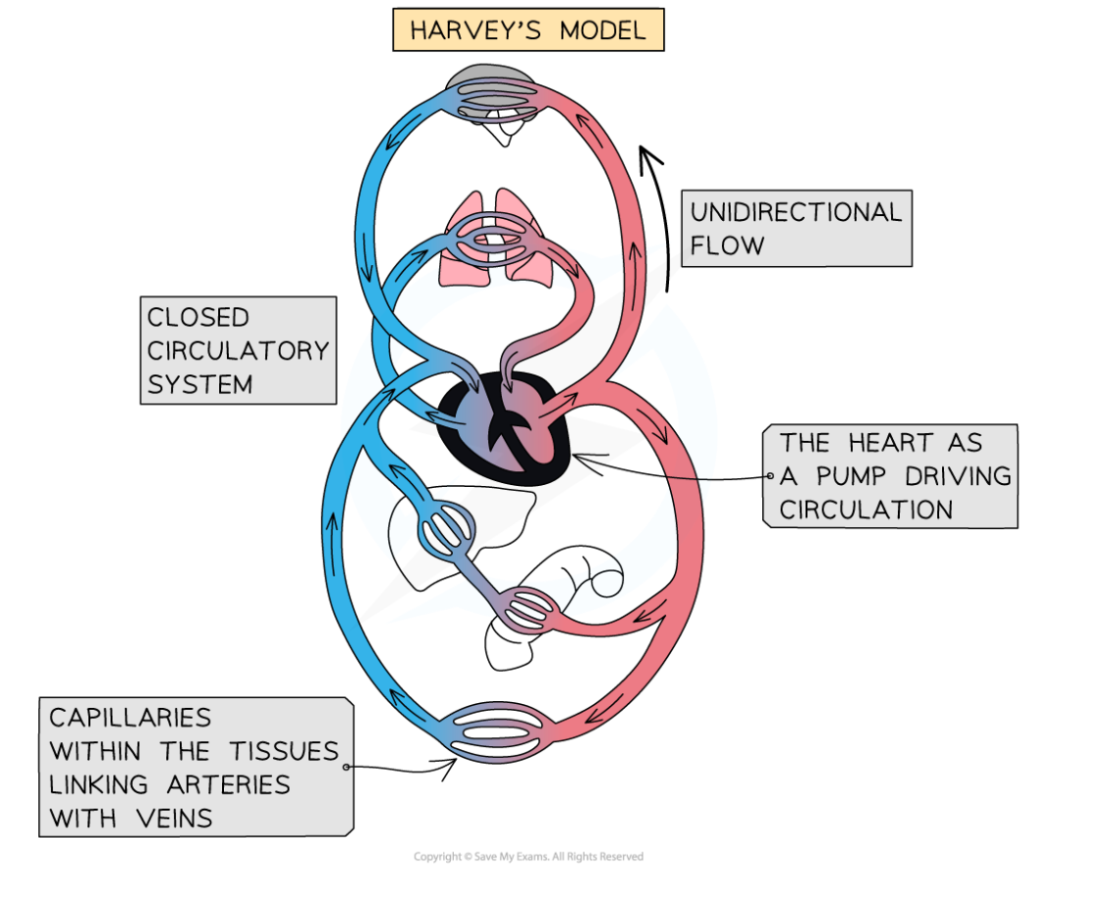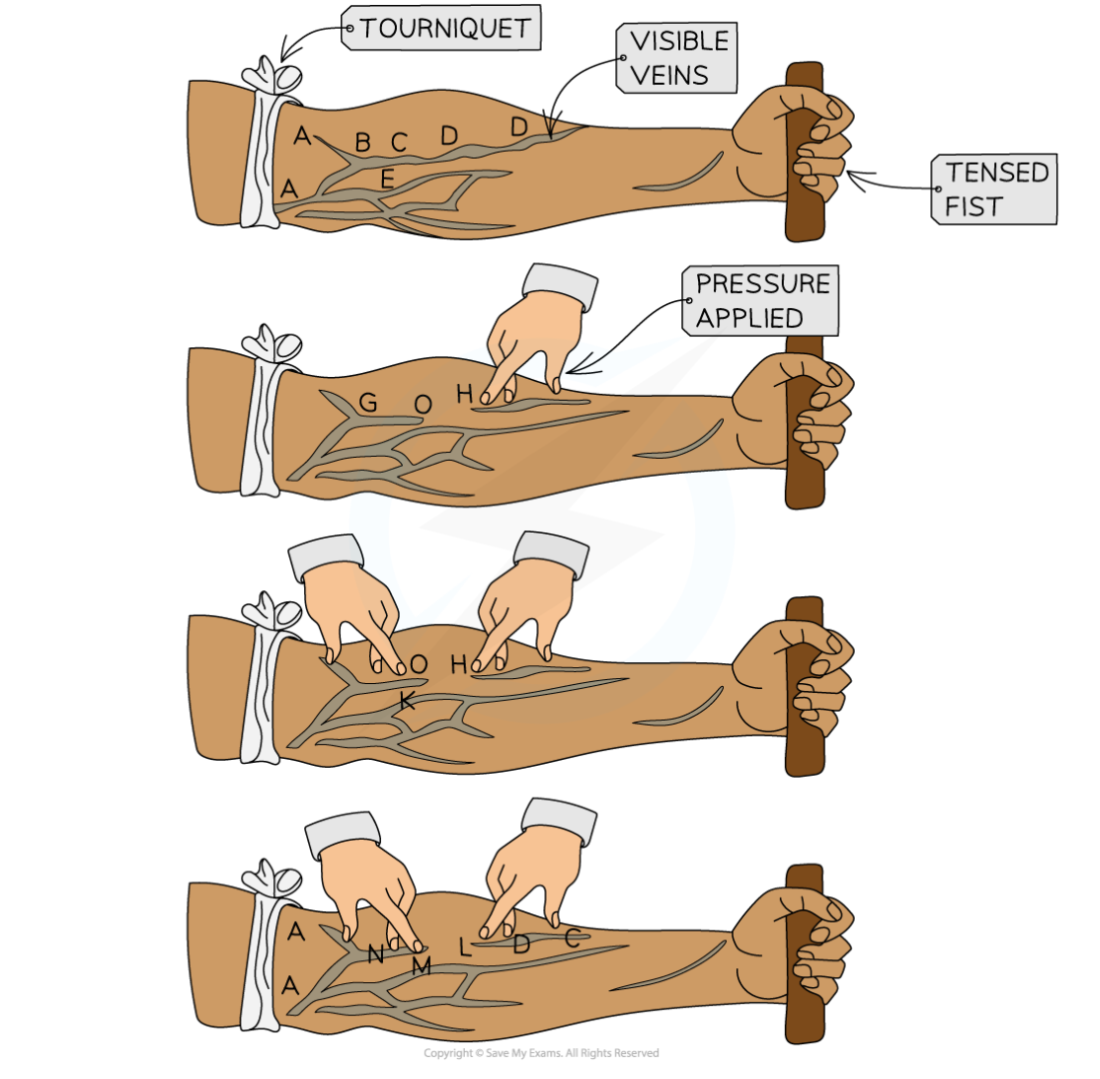Discovery of the Circulation of Blood
NOS: Theories are regarded as uncertain; William Harvey overturned theories developed by the ancient Greek philosopher Galen on movement of blood in the body
- A theory can be defined as:
- A carefully thought-out idea, with accompanying evidence, that explains observations of the natural world
- Theories are often constructed using the scientific method which involves bringing together many facts and hypotheses
- There is always a level of uncertainty when using scientific methods
- Uncertainty can be due to
- Natural variability of individual organisms
- Accuracy of measurements taken
- Theories can therefore be regarded as uncertain due to the uncertainties in the methods used
- New technology or the discovery of new evidence often results in theories being falsified or overturned
- An example of the falsification of a set of theories is that of Galen's theories about the blood and circulation
- Galen was an ancient Greek philosopher and surgeon who developed the following theories
- Blood is formed in the liver from ingested food
- Blood is pumped backwards and forwards between the liver and the right ventricle in the heart
- Some blood moves into the left ventricle through invisible pores and mixes with air from the lungs
- This mixing of air with blood produces spirits which are distributed to the body via the brain
- Blood is consumed by the tissues so that new blood must be continuously made
- Galen failed to present any evidence for his theories
- Galen was an ancient Greek philosopher and surgeon who developed the following theories
- Galen's theories were overturned by English physician William Harvey through a series of experiments and observations
- Harvey developed the following theories, which were ridiculed at the time
- Blood is pumped to the brain and body by the heart
- Blood circulates through the pulmonary and systemic circulation systems
- Capillaries exist which link arteries to veins
- Blood flow is too fast for blood to be consumed by the tissues; it would run out too quickly to be replaced. Instead, blood returns to the heart and re-circulates
- Harvey refused to accept Galen's theories without direct evidence and he toured Europe to demonstrate evidence for his own theories to others, eventually leading to acceptance of his new theories
- Harvey developed the following theories, which were ridiculed at the time


Galen proposed a model which was later disproved by William Harvey
Discovery of the Heart as a Pump
- Harvey used a series of experiments to show that blood flow is unidirectional and that the presence of valves prevents backflow in veins
- Harvey attached a tourniquet to a person's upper arm and instructed them to grip tightly onto a pole
- A tourniquet is a band applied to a limb to limit blood flow to the lower part of that limb
- Once the veins became visible, Harvey proceeded to apply pressure to the veins systematically to show how blood flow was affected
- He used this method to demonstrate how blood moves unidirectionally through the veins in the arm
- Harvey attached a tourniquet to a person's upper arm and instructed them to grip tightly onto a pole

William Harvey showed the movement of blood into the veins of the arms in this simple experiment
- He then demonstrated how the heart acts as a pump which forces blood out through the arteries; it then circulates around the body before it returns to the heart through the veins
- He also showed that the blood being pumped out of the heart was travelling too quickly to be constantly used up by the tissues, as described by Galen
- Despite not having powerful enough microscopes to see the capillaries, Harvey predicted their presence as small vessels which link the arteries to the veins
